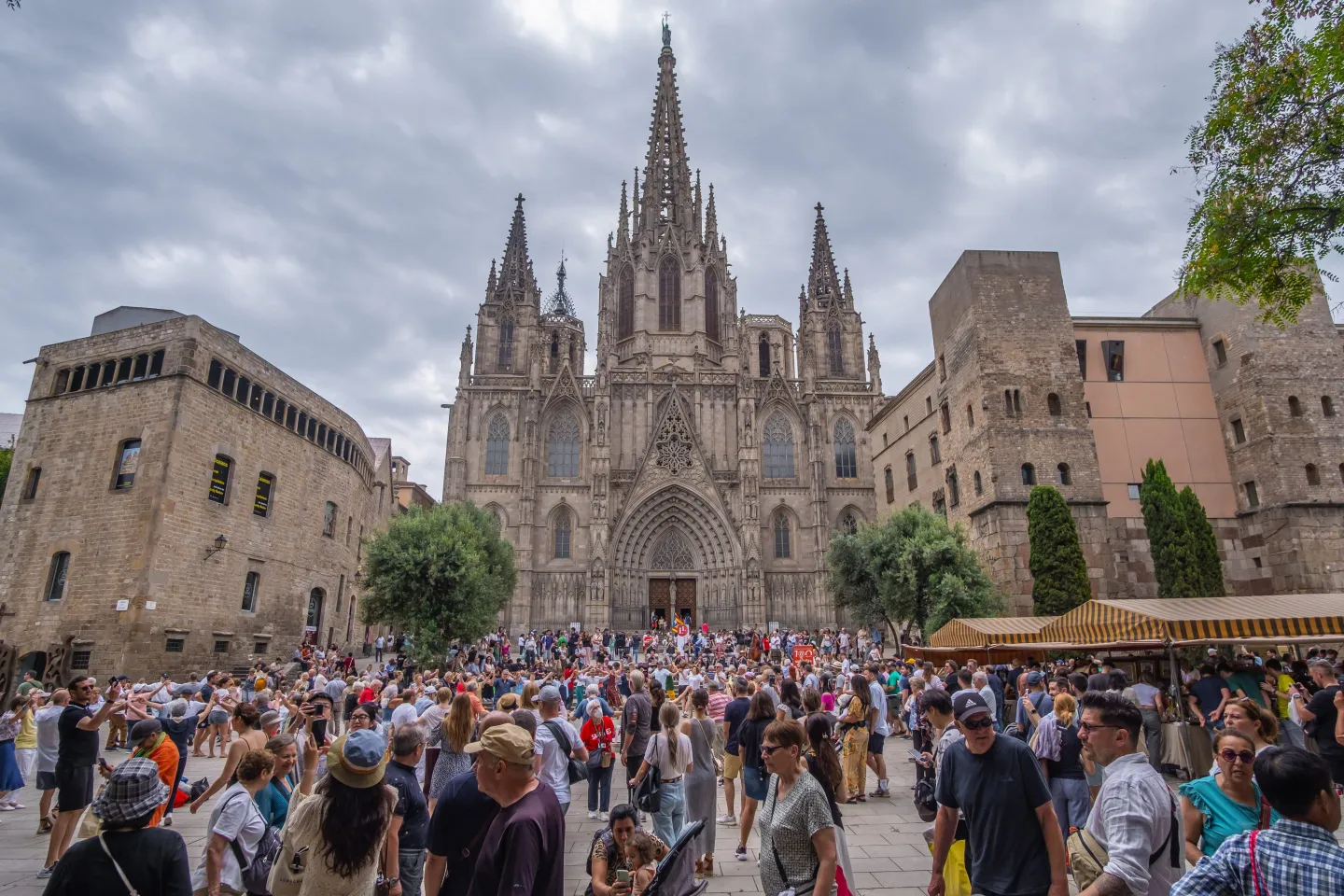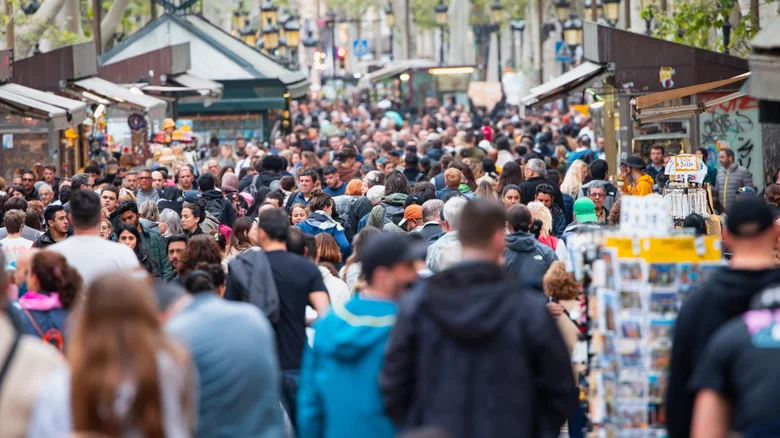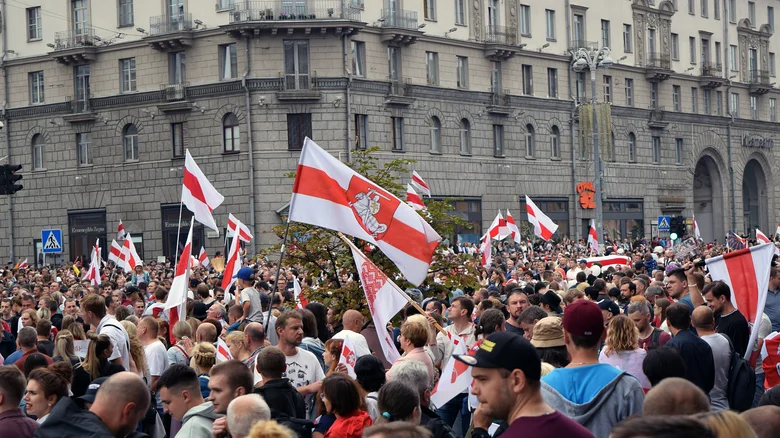Overtourism in Europe has become one of the most debated global travel issues of the decade. Once celebrated for its cultural diversity, rich heritage, and breathtaking landmarks, Europe now finds itself overwhelmed by millions of visitors each year.
Cities like Venice, Barcelona, and Amsterdam are facing a tourism crisis that’s changing local life and threatening historical integrity.
As crowds flood narrow streets and historic squares, residents have begun to ask whether tourism has gone too far.
What is Overtourism?

Overtourism refers to a situation where the number of tourists exceeds a destination’s capacity to handle them sustainably. It disrupts the daily lives of locals, harms the environment, and erodes cultural authenticity.
In Europe, where many cities were never designed for modern mass travel, overtourism is testing both infrastructure and patience.
From overflowing beaches to long queues at every attraction, this growing problem reflects the dark side of global mobility.
The Rise of Overtourism in Europe
The rise of low-cost airlines, budget accommodations, and social media exposure has made travel easier than ever. Platforms like Instagram and TikTok turn every picturesque corner into a must-see destination.
European capitals, already dense with history and art, attract millions annually.
In 2024, over 700 million international visitors came to Europe — a record-breaking figure. However, this economic success has come at a social cost, as local communities feel suffocated by relentless visitor flows.
Venice: The Symbol of Overtourism

Venice, Italy, has become the most cited example of overtourism in Europe. The city, with only about 50,000 residents in its historic center, receives up to 30 million tourists a year.
Locals complain about noise, overcrowded waterbuses, and skyrocketing rents. The Venetian government has introduced entry fees and limited cruise ship access to control the influx.
Yet, the problem persists. Many residents believe the city is transforming into a “museum without citizens,” where daily life has become secondary to tourism profits.
Barcelona’s Backlash Against Tourists
Barcelona, Spain, once prided itself on being a cosmopolitan hub of art and architecture. Today, locals protest against overtourism by hanging banners that read “Tourists go home.”
Neighborhoods like La Barceloneta and El Raval have seen sharp rent increases, pushing families out of their homes. The city council has limited short-term rentals like Airbnb to ease housing pressure.
Barcelona’s struggle reflects the tension between economic dependence on tourism and the need to preserve residents’ quality of life.
Amsterdam’s Fight for Balance
Amsterdam, the Netherlands’ charming canal city, is another hotspot of overtourism in Europe. Known for its museums and nightlife, the city has seen tourism grow faster than its infrastructure can manage.
Authorities have banned new hotels, limited canal cruises, and even discouraged certain types of tourists with targeted campaigns.
Amsterdam’s new slogan, “Enjoy and Respect,” urges visitors to treat the city as a home, not a playground. The goal is to maintain balance — promoting cultural exchange without losing control.
Santorini and Dubrovnik: Islands Under Pressure
Santorini, Greece, and Dubrovnik, Croatia, face overtourism from cruise ships. Thousands of passengers disembark for a few hours, crowding narrow streets and straining local services.
Dubrovnik, a UNESCO World Heritage Site, has been forced to cap the number of visitors allowed in its Old Town each day. Similarly, Santorini has introduced a daily limit on cruise arrivals.
These small destinations, with limited resources, exemplify how overtourism can threaten both environment and culture.
Economic Benefits vs. Social Costs
Tourism is vital to Europe’s economy, contributing nearly 10% to the EU’s GDP and supporting millions of jobs. However, overtourism has created social and ecological imbalance.
While hotels and restaurants thrive, residents face higher living costs and overcrowded transport systems. Natural sites, like the Alps or the Mediterranean coast, are suffering from litter, erosion, and water shortages.
The challenge lies in balancing economic gain with sustainable living — a dilemma many European nations are now addressing.
How Social Media Fuels Overtourism

The role of social media in overtourism cannot be ignored. Viral travel videos and influencer posts have turned hidden gems into tourist magnets overnight.
A single trending photo can bring thousands of visitors to a once-quiet spot. This “Instagram effect” has fueled overcrowding and environmental damage.
European authorities are now urging influencers to promote responsible travel and lesser-known destinations, helping spread tourism more evenly across the continent.
Government Strategies to Tackle Overtourism
European governments are introducing new strategies to manage overtourism effectively. Some are implementing visitor taxes, entrance fees, or timed ticket systems to regulate numbers.
Others promote sustainable tourism through education and local partnerships. For instance, Norway and Scotland are encouraging eco-friendly initiatives, while Italy’s cities experiment with digital booking systems for crowd control.
The European Union is also funding projects to promote lesser-known rural destinations and reduce pressure on urban hotspots.
The Role of Locals in the Anti-Overtourism Movement
Local communities are becoming vocal advocates for sustainable tourism. Across Europe, residents organize protests, awareness campaigns, and cultural initiatives to protect their heritage.
Cities like Lisbon and Prague have citizen groups collaborating with authorities to create fair tourism policies. This growing movement highlights a shared message: tourism should benefit locals, not displace them.
Sustainable Travel: The Future Solution
Sustainable tourism is not just a buzzword — it’s a necessity. Travelers are encouraged to make conscious decisions: visit off-season, support local businesses, use public transport, and respect local culture.
Many European destinations now offer eco-certified accommodations and promote slow travel experiences like train journeys over short flights.
The goal is to build a tourism model that preserves both nature and culture for future generations.
Europe’s Changing Relationship with Tourists
Europe is not rejecting tourism — it’s redefining it. The continent welcomes travelers who appreciate its history and respect its boundaries.
The growing fatigue among locals is a sign of imbalance, not hostility. If overtourism continues unchecked, Europe risks losing the authenticity that attracts people in the first place.
The challenge now is to transform tourism into a more thoughtful and sustainable exchange.
Faqs About overtourism in Europe
What causes overtourism in Europe?
Overtourism in Europe is caused by cheap travel options, social media promotion, and the rising global middle class. Millions can now afford European vacations, but infrastructure has not expanded accordingly.
Which European cities suffer the most from overtourism?
Venice, Barcelona, Amsterdam, Paris, and Dubrovnik are among the worst affected. Each struggles with overcrowding, pollution, and cultural loss due to mass tourism.
How are European governments responding to overtourism?
Governments are introducing visitor limits, tourist taxes, and entry fees. Some are promoting off-season travel and developing rural destinations to balance visitor flow.
How can tourists help reduce overtourism?
Tourists can travel during less busy seasons, respect local customs, stay in eco-friendly accommodations, and avoid overcrowded landmarks by exploring hidden gems.
Is overtourism only a European problem?
No. While Europe faces severe cases, overtourism is a global issue affecting places like Bali, Thailand, and Japan. However, Europe’s dense population and historic cities make it more visible here.
Final Thought
Overtourism in Europe serves as a wake-up call for the global travel industry. The continent’s most beloved cities are struggling to maintain their charm under the pressure of constant crowds.
By adopting responsible travel practices, supporting local economies, and respecting cultural boundaries, both tourists and authorities can reshape the future of travel.
Read More: UNGA: Case of a Failed Agency — Analysis & Critique
Europe’s beauty deserves admiration, not exploitation — and the world must learn to enjoy it sustainably.






